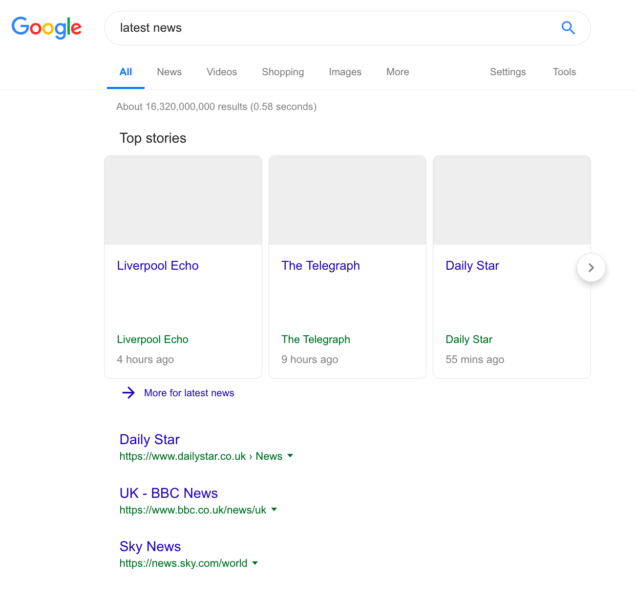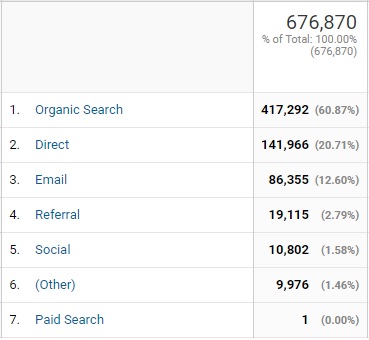Seth Godin’s decade-old quote is still thrown around in marketing circles. It pops up on LinkedIn feeds and podcasts. It’s a great conversation-starter.
But if content marketing was the only marketing left in 2008 – when Seth claimed so – then the industry should be 11 years farther down the road toward marketing evolution. What’s changed? What’s still true?
If marketing models inevitably fade into history books, who’s to say content marketing is somehow being spared the cruel hands of time?
A look at now-defunct or barely breathing marketing practices, like direct mail, telemarketing, TV commercials, billboards and paid corporate promotion, speaks to the possible demise of other marketing formats, too.
Netflix replaced cable TV. Spotify replaced physical albums. But what replaces Netflix and Spotify? Or have we reached an endgame?
Here’s why „content marketing is the only marketing left“ holds validity, but in a way we may not fully realize.
Marketing is a canvas, content is the paint
The remaining marketing channels available to brands essentially boil down to:
- Websites (via organic, referral or direct traffic).
- Social media.
- Email.
- Apps.
- Paid ads.
- Podcasts.
- Events.
The question then becomes: How do I use these pathways?
The answer is content.
Something has to change hands between brand and audience, and marketing is a transaction of ideas.
Marketing is a canvas, content is the paint
Now, the definition of „content“ is so vast, almost to the point of being unhelpful.
An eBook is content. A printed sales sheet is content. A guest spot on a podcast is content. Anything and everything is content. Annoying, right?
That doesn’t help you be effective or be precise. So the issue at stake may not be whether „content marketing is the only marketing left“; it’s that content marketing casts such a large shadow that it encompasses every other type of marketing in some form.
More specifically, marketing channels are just canvas. Content is the paint. So unless you enjoy staring at blank parchment, anytime you pick up a brush you are „doing content marketing.“
Brand publishing for table stakes
What we can say is that creating more content does not a good content marketer make.
More than half of all web traffic comes from organic search engines. Ten years ago digital marketers interpreted this fact to mean: more blog posts = more traffic.
And they were right for a spell.
But algorithmic updates have changed the equation to: quality content + amplification = more traffic.
This has forced brands to become publishing houses, which is not an easy transition by any stretch of the imagination. Marketers can no longer get by attending trade shows, carrying business cards and posting infrequently on social media – that’s not a strategy.
Companies now have to produce long-form content that addresses a range of business goals, such as brand awareness, thought leadership, lead generation and organic keyword rankings. This is only possible through content marketing campaigns centered on dedicated buyer personas with the support of some level of marketing automation.
Thus it may be more accurate to say that „the only marketing left is targeted marketing.“
It may be more accurate to say that „the only marketing left is targeted marketing.“
Attention spans are shrinking. Everyone uses ad blockers. We all suffer from fake news fatigue. In a world trafficking in terrible content, authenticity and emotion are in short supply.
This fact is backed up by our own data. Ninety-four percent of content gets zero backlinks, and 1.3 percent of all articles eat up 75 percent of social shares. That’s because it’s written without an audience in mind.

If we think of the many months it takes to publish a full print magazine – because the costs and stakes are so high – the same approach should be taken with digital brand publishing. Optimize every piece of content for layout, format, ad space/CTAs, audience, artwork, shareability, etc.
The center of the universe: Visuals
Which brings us to the next point. Content marketing is visual marketing.
So it’s probably more true to say that „visual marketing is the only marketing left.“
When was the last time you saw a full block of text with no accompanying images or videos? Why are dynamic thumbnail images so important to Google SERP features and social media posts?
Why do YouTube splash screens now autoplay? Why have lengthy Tumblr and MySpace rants been supplanted by „going live“ on Facebook or Instagram?
It’s because visuals convey more information more quickly. And they require less buy-in from viewers than a 2,000-word text-only article.
Nowadays, text-only content is effectively just a skeleton of what we should consider actual content. Visuals are the flesh, the face, the first impression.
Nowadays, text-only content is effectively just a skeleton of what we should consider actual content. Visuals are the flesh, the face, the first impression.
The here and now competition
In the past year, content marketing has run into a buzzsaw of regulatory changes and nascent technology. These threats are, at the moment, piecemeal but could hint at an industry future rife with disruption.
We’re talking about the European Union’s new copyright directive that, among other things, aims to appropriately attribute online content to publishers – those that own the copyright.
This means Google would have to pay brands every time they feature content, such as images, thumbnails, videos, metadata and text snippets, in SERPs. Currently, Google scrapes publisher info and displays it for free, and publishers receive no credit/payment beyond a simple link, which may or may not be clicked.
As such, Google is experimenting with a „naked SERP,“ one that contains only hyperlinks and titles, as that’s all that would be legally allowed under the new EU ruling. Here’s what that would look like:

Pretty boring, huh?
Should this change take effect in the EU, and perhaps globally, the content marketing landscape would be changed in infinite ways. Google suggests clicks would plummet for everyone. That’s why the search engine is pushing back on the rule, hoping to compromise by showing „limited preview text“ to at least provide a small bit of context to searchers.
That’s their company line at the moment, but publishers see the compromise as a way for Google to continue siphoning their traffic via dynamic SERP features whereby searchers have no need to actually click on links (and thus reach publishers‘ sites).
Half of web traffic comes from organic search, so if this pathway is wiped out by regulatory updates, then content marketing is in for a rude awakening, particularly with regard to blog posts and landing pages. Even more problematic is that some companies rely on organic traffic more than the industry average, like us. Roughly 60-65 percent of our traffic arrives from organic search, so, sure, the tension exists.

This new reality builds upon the existing phenomena of zero-click searches, which Moz has highlighted. When Google adds a Knowledge Card to SERPs, overall organic clicks plummet by 68 percent. So all the content marketers out there are seeing their organic traffic cut by two-thirds. Other SERP features have a similar effect, and Google has proven it intends to add more in the future. Bye bye, organic margins.
When Google adds a Knowledge Card to SERPs, overall organic clicks plummet by 68 percent.
The other issue could be the growing effectiveness of programmatic advertising. While not a direct competitor to content marketing, it is eating up larger percentages of company budgets.
Automated, direct real-time bidding removes all middlemen from the ad-buying process, and virtually no human intervention is required. Set a budget. Enter ad requirements. Advertisers gain high-value exposure and publishers gain revenue.
If I can automate advertising down to the cent, and it generates a guaranteed return, the argument for organic content marketing, with all the resources it takes and blurry ROI potential, is a bit weak.
The promise of overpromising
Regardless of the end marketing product, there’s still the issue of companies communicating with consumers in an outdated way. The old-school handshake deal brokered in person doesn’t really happen anymore. And businesses without an online presence are few and far between: Online marketing is really the only marketing left.
Businesses without an online presence are few and far between: Online marketing is really the only marketing left.
Sales speak is still way too common. Volume is no substitute for quality. Intrusive brand experiences leave a poor taste.
Content marketers could better serve their prospects by delivering fewer assets. But each of those assets needs to be more impactful.
Think of it this way: Do you want to watch one Oscar-worthy movie per month, or are you happy to watch two straight-to-DVD films every day?
How many of those crappy films could you recall the week after? On the other hand, I know exactly where I was and what I felt when I saw Lincoln or Birdman.
Look at Brian Dean, the crowned prince of content marketing. On his site, Backlinko, he produces just one or two pieces of content each month. Yet he ranks for every keyword he wants to and generates backlinks like nobody’s business.
So the lesson to heed is this: Do not waste money on quantity. Focus on singular content pieces, making them as strong as possible. If it takes an entire quarter to produce a single eBook, that’s fine. Just be sure to promote the hell out of it and that it answers every conceivable question a reader may have on that topic.
The higher the bar is set, the harder it is for competitors to skyscrape right over your content.
Now back to the original premise.
Is content marketing the only marketing left?
Sure, if that’s how you want to categorize things.
But we’d propose an alternate assertion. What in your content inventory is valuable enough to market?
By today’s (and tomorrow’s) standards, likely not much – at least not in its current iteration.
What say you?





